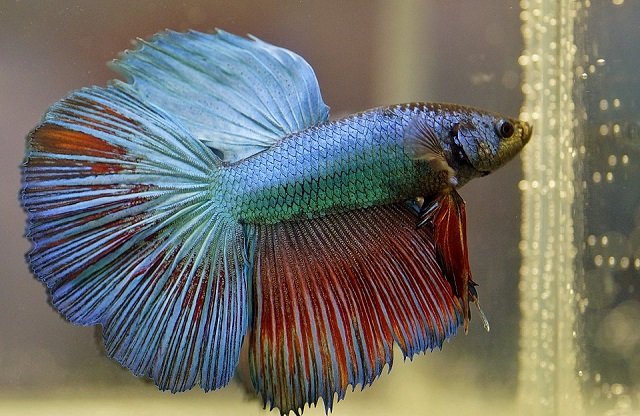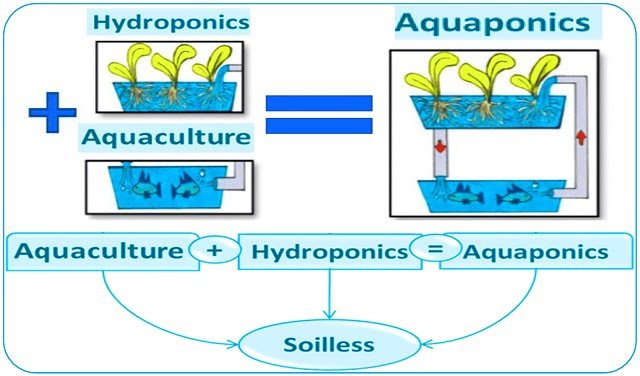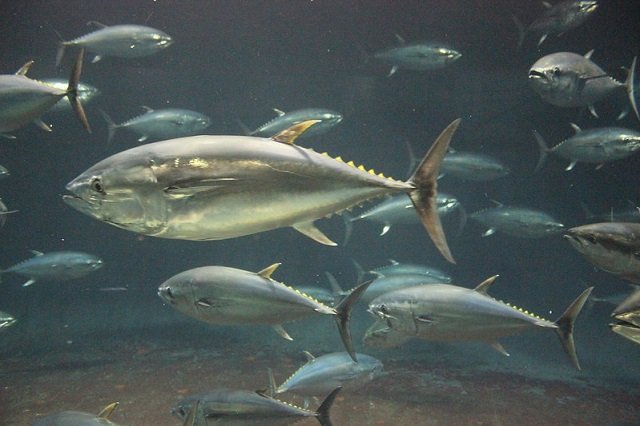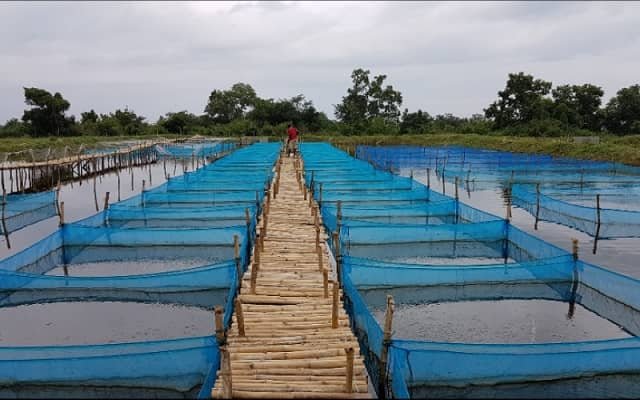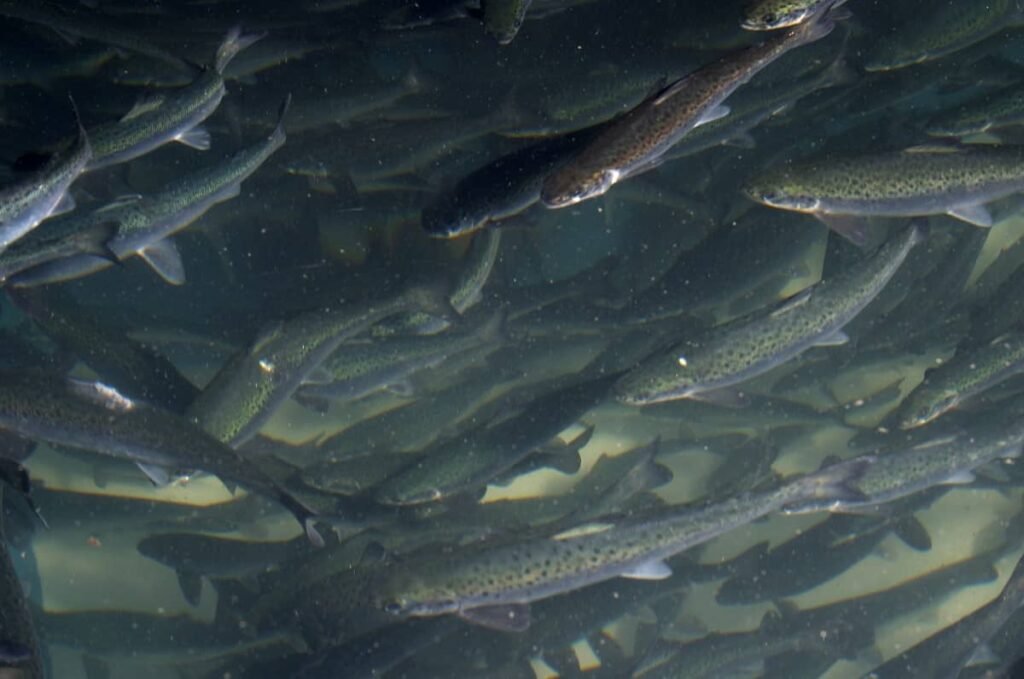
Recirculating Aquaculture Systems (RAS) have emerged as one of the most promising solutions for sustainable Atlantic salmon production. Their primary advantage lies in being closed systems that offer, in theory, superior biosecurity and greater environmental control. However, pathogen transmission remains a critical concern.
While horizontal transmission via water is widely documented, a recent study conducted at two commercial Atlantic salmon smolt farms in the Faroe Islands has highlighted a previously underestimated transmission pathway: the air.
For the first time under field conditions, a research team from the Faroese Food and Veterinary Authority and Hiddenfjord has provided evidence that key salmon viruses—including salmon gill pox virus (SGPV), non-virulent infectious salmon anemia virus (ISAV-HPR0), and infectious pancreatic necrosis virus (IPNV)—can be aerosolized.
This discovery, which includes the first isolation of viable IPNV from aerosols in an RAS, raises alarms regarding the risks of airborne transmission and the need to re-evaluate biosecurity measures in these facilities.
Key conclusions
- This is the first study in a commercial setting to demonstrate the presence of SGPV, ISAV-HPR0, and, crucially, viable IPNV in aerosols within Atlantic salmon RAS.
- The findings suggest that pathogen transmission in RAS is not limited to water; a potential risk of airborne transmission exists, which has significant implications for biosecurity.
- Biofilter rooms and degassers were identified as the primary generation points for pathogen-laden aerosols, showing higher concentrations than those found near the culture tanks.
- Sampling “anesthetic water” (water used to anesthetize fish for sampling) proved to be a non-invasive method superior to tank water for detecting pathogens, as it better reflected the infection dynamics within the fish population.
- The SGPV and ISAV-HPR0 pathogen load detected in aerosols directly mirrored the infection trends observed in fish and water, confirming that as the infection level rises in the system, so does its presence in the air.
The study: Searching for pathogens in air, water, and fish
To understand the pathogen dynamics, researchers implemented exhaustive monitoring over nine weeks at “Smolt Farm 1.” The team collected samples from three different matrices:
- Fish: Gill and kidney swabs were taken, primarily from moribund fish or those displaying abnormal behavior.
- Water: Both culture tank water (primary water) and anesthetic water (water used to sedate fish during sampling) were analyzed.
- Aerosols: Two types of air samplers (Coriolis+ and Coriolis Compact) were used to capture environmental particles.
The samples were analyzed for five key pathogens in Faroe Islands smolt production: SGPV, ISAV-HPR0, PRV-1, IPNV, and the bacterium Flavobacterium psychrophilum.
Pathogens are in the air
The study’s findings were revealing. At Farm 1, no pathogens were detected in the “unexposed fish” in room A (quarantine zone). However, following their transfer to room B, which housed “previously exposed fish” from an earlier group, a clear infection pattern was observed.
A sequential infection pattern
The infection began with an SGPV outbreak, which peaked 7 days post-introduction, coinciding with increased mortality. This was followed by a transient ISAV-HPR0 infection and, finally, a progressive PRV-1 infection toward the end of the sampling period. IPNV was also detected intermittently.
Stay Always Informed
Join our communities to instantly receive the most important news, reports, and analysis from the aquaculture industry.
Most surprisingly, all of these pathogens were detected in the aerosol samples.
The SGPV and ISAV-HPR0 trends in aerosols faithfully mirrored the infection peaks observed in fish swabs and water samples. In contrast, internal pathogens like IPNV and PRV-1 had much lower representation in aerosols, likely due to subclinical infections limiting their release into the water and, consequently, into the air.
The first field proof: Viable IPNV in the air
Detecting a virus’s genetic material (RNA/DNA) in the air is important, but it does not prove the virus is infectious. To confirm this, the team attempted to isolate viable viruses in cell cultures.
At Farm 1, although IPNV RNA was detected, a viable virus could not be cultured. Researchers suspected this might be due to the initial sampling strategy (use of surfactants and prolonged storage).
Therefore, they conducted targeted sampling at “Smolt Farm 2,” which was experiencing a clinical IPNV outbreak. With an optimized strategy (no surfactants and immediate processing), the result was historic: they successfully isolated viable IPNV from the aerosol samples.
The virus cultured from the air showed the characteristic cytopathic effects (CPE) of IPNV in the cell lines. This finding is the first field evidence that viable IPNV can be aerosolized in an RAS, demonstrating that the risk of airborne transmission is not merely theoretical.
Biofilters and degassers: The aerosol generation hotspots
The study not only confirmed which pathogens were in the air, but also where they were most abundant. Aerosol samples taken in the biofilter room (which contained drum filters and degassers) showed consistently higher detection rates and pathogen loads compared to samples taken above the local tank degassers.
This suggests that RAS components such as degassers (which strip CO2 by introducing large amounts of air) and drum filters (which mechanically spray water) act as aerosol generators, similar to how “sea spray” is formed. During an outbreak, these components continuously aerosolize pathogens present in the water.
A new surveillance tool: The power of anesthetic water
A secondary finding of great practical value was the validation of anesthetic water as an improved non-invasive surveillance method.
Researchers compared pathogen detection in tank water versus the water used to anesthetize fish during sampling. For gill pathogens (SGPV and ISAV-HPR0) and the bacterium F. psychrophilum, the anesthetic water showed:
- Higher detection: Consistently higher pathogen levels (lower Cq values).
- Better correlation: A stronger positive correlation with viral loads found in fish swabs.
- Greater robustness: The anesthetic water was unaffected by a partial tank cleaning event, which did dilute the primary water samples.
This suggests the handling process facilitates pathogen release and that the smaller, defined volume of anesthetic water concentrates the genetic material, improving detection sensitivity. While it does not replace individual diagnostics, it is a superior indicator of pathogen prevalence at the system level.
Implications for RAS biosecurity: Beyond the water
This study fundamentally changes the perception of biosecurity in RAS. It demonstrates that aquatic pathogens can become airborne pathogens within the facility.
RAS facilities continuously draw in large volumes of air for their operation (e.g., degassing, aeration). If this air is not decontaminated at the intake and exhaust, a constant risk of generating and spreading pathogen-laden aerosols exists during outbreaks.
This poses two clear risks:
- Internal contamination: Aerosols from an affected RAS can travel through the air to other supposedly isolated systems within the same farm.
- External contamination: Depending on farm proximity, expelled aerosols could travel to neighboring facilities or even nearby marine sites.
The isolation of viable IPNV, a hardy virus, underscores this risk. Furthermore, the detection of ISAV-HPR0 in aerosols supports the hypothesis that this virus could be introduced into fish farms from the marine environment via aerosols (like “sea spray”), a process that RAS degassers mimic.
In conclusion, this work provides the first field evidence that SGPV, ISAV-HPR0, and viable IPNV are present in RAS aerosols. Producers and operators must now consider air as a potential pathogen transmission pathway, demanding a re-evaluation of biosecurity protocols to include air management and possible decontamination.
Contact
Dhiraj Krishna
National Reference Laboratory for Fish and Animal Diseases, Faroese Food and Veterinary Authority
Torshavn, Faroe Islands
Department of Veterinary and Animal Sciences, University of Copenhagen
Copenhagen, Denmark
Email: dkr@hfs.fo
Reference (open access)
Krishna, D., Petersen, P. E., Dahl, M. M., Egholm, I., & Christiansen, D. H. (2025). First field evidence of aerosolised SGPV, ISAV-HPR0, and IPNV in Atlantic salmon RAS highlights transmission and biosecurity risks. Scientific Reports, 15(1), 1-19. https://doi.org/10.1038/s41598-025-21970-y
Editor at the digital magazine AquaHoy. He holds a degree in Aquaculture Biology from the National University of Santa (UNS) and a Master’s degree in Science and Innovation Management from the Polytechnic University of Valencia, with postgraduate diplomas in Business Innovation and Innovation Management. He possesses extensive experience in the aquaculture and fisheries sector, having led the Fisheries Innovation Unit of the National Program for Innovation in Fisheries and Aquaculture (PNIPA). He has served as a senior consultant in technology watch, an innovation project formulator and advisor, and a lecturer at UNS. He is a member of the Peruvian College of Biologists and was recognized by the World Aquaculture Society (WAS) in 2016 for his contribution to aquaculture.
